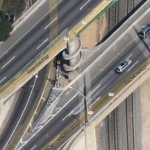Who Will Defend the American Family? was the title in print. Online it is, Where Are the Socially Conservative Women in This Fight?
I am not an editor… well, not a newspaper editor. I am a technical editor. One of my jobs is to read articles intended for academic journals and tell the authors how they might be improved. While I am not expert in their various fields, I can tell them, as a well-read layman, if something does not make sense to me. I then ask, is this intentional? Would you prefer if it did make sense to a reader like me, or is it fine as it is for its intended audience? If the former, we try to rephrase it. If the latter, I go home early, modest middle-class paycheck in hand.
[Full disclosure: I did work at the NYTimes one summer, as what they referred to then as a copyboy. I wasn’t interested in journalism, particularly, but loved being behind the scenes at a vastly complicated and prestigious enterprise. I work for the Jet Propulsion Laboratory now (a NASA center), and get the same kind of kick being backstage where they make space miracles.]
I don’t know if that is what New York Times Op-Ed editors do. Maybe they identify some thought leader or pundit or VIP, and tell them, You’re an important person, we’d like to include you on our broadsheet. Here’s X column inches, do with them what you will. Fill ‘er up! Maybe a copyeditor goes over it for typos and simple grammatical errors. This is what we at JPL call a low level of edit (LoE; we love our acronyms at JPL). At a higher LoE, the editor might shoot an email to the author, call them on the phone, or meet them in person for a latté or a Chardonnay (this is, after all, the tony New York Times). They might say something like, Love the piece! Really tight and punchy. (You should always start by praising something.) Then they might ask, In the third graf (I believe this is newspaper slang for “paragraph”; jocular misspelling was popular in the 20s — see “oll korrect” for OK), you make a statement that I didn’t understand. Could you unpack it for me?
Or the editor, at a very high LoE indeed, might say, can you sum up your point for me in a single sentence? If you can, maybe that text ought to be included in the article. If you can’t, maybe we should give you another week or so to think about it. I’m sure we can, in the meanwhile, find a polite conservative to defend us against charges that we don’t feature any conservatives. (Yes, that will help, undoubtedly. Always does.)
No, I don’t know what a New York Times Op-Ed editor does. But if I were editor, I would have asked Ms. Andrews (odd honorific, given the content; wouldn’t she prefer Mrs. or Miss?) the following questions:
In the fifth graf (or would a real newspaperperson say “graf 5”? Don’t know… Have to watch “The Front Page” again), you say, “Dissenters from the feminist line are more likely to be motivated by a libertarian commitment to equal treatment of the sexes than a socially conservative commitment to gender roles as an affirmative good.” Could you clarify for me how a libertarian commitment to equal treatment of the sexes manifests itself? If it is what it sounds like, it means nobody actually has to treat women equally unless they damn well feel like it. So, in other words, status quo 50s. Or am I missing something? Do you feel that at some point, we did not have the liberty to treat the sexes equally? Can you give me a for-instance?
In the sixth graf, you write, “She believed she was protecting women from having a feminist agenda they did not agree with imposed on them against their will.” Helen (may I call you Helen? Oh, okay, Mrs. Andrews then)… Mrs. Andrews, I think our readers would benefit from some clarification here. What would be the mechanism for this agenda to be imposed on them? Would they not be allowed to be a girly-girl? Is some leftist, feminist version of the muhtasib (Saudi morality police) going to tell them to wear jean overalls and wipe off their makeup? Or are they prevented from being a housewife and homemaker and forced to work in the factories, side-by-side with leering men? I’m just not clear on the mechanism of this agenda imposition. Pls clarify.
In the seventh graf, you state, “By making it easier for women to pursue success in the workplace, we have made it harder for them to do anything else.” Again, I understand your statement, but it raises the question (not “begs the question”; remember, I’m playing the role of a New York Times editor here, and I would know to avoid that error), I say, it raises the question of how exactly have we made it harder? What is the mechanism?
[Don’t mean to be coy… it may indeed be harder for women to avoid the workplace now than when America Was Supposedly Great Before. I’ll get to that. I’ll give you a hint: it’s the same reason that people (men included!) work more than one job. Second hint: Stagnant wages! It’s because of Wall St! Oh, dear… I blurted it out. See, all that “shareholder value” sucks capital away from serving other stakeholders like labor, the community, and customers.]
Immediately after, you aver (important not to repeat words, but hard when you have to keep asking the same question over and over), “Pressing the brake on the trends set in motion by the feminist revolution would leave women more free to follow a diversity of paths.” Again, you claim that a given cause has a particular effect, but the mechanism by which that cause leads to that effect is murky, at least to me. Can you explain?
In the 11th graf, you get, I think, to your point: “When mothers started entering paid employment in large numbers in the 1970s, it led to a bidding war over middle-class amenities that left everyone paying more for the privilege of being no better off than before. In the prior graf you have cited houses, education, and healthcare as those amenities that have gone up in price. Is that what you mean? Really? That women in the workforce has made healthcare and houses and a college degree more expensive? Is it because working women buy second houses? Do they need more college education? Do they get sick more, thus raising the demand and driving up prices?
See, I thought healthcare got more expensive because of Wall St guiding investors to publicly-owned hospitals and insurance companies, thus demanding higher profits. I thought the culture among executives (male, mostly) was to outdo their brethren by demanding higher compensation and competing for fickle investor dollars.
I thought housing got more expensive because Treasury notes stopped delivering returns that were satisfying to investors, so they had to look for other investments and came upon mortgages. This led banks to issue vastly more, and increasingly dubious, mortgages to fill that crying need, which led to a housing shortage which led to higher prices and a bubble.
Education… I don’t know. Maybe if women stopped demanding education, colleges would charge less? Honestly, I’m not an economist. If only there were a Nobel-prize winning economist around who could explain this!
In the next graf (I can’t keep counting them for gods sake. You do some work for a change.), you claim, “In the bottom tier, marriage is disappearing as lower-income women have too few men with solid jobs to choose from and as the growing number of men without regular work…” You seem to be hinting, without stating it explicitly, that there are so many jobs to go around, and if a woman takes a job, she is taking it from a man and then she won’t be able to find a husband who out-earns her. What’s funny (funny strange, not funny ha-ha) is that conservatives make the argument that technology will lead inexorably to more jobs. So, robots in the workplace good, but women bad?
More to come… I need a break, and it’s a long article. Not only that, but I’m at a disadvantage — in my family, all the women worked, back to my grandmother. She was an actress, so some of you might quibble with the word “work,” but trust me, it’s strenuous. She was also quite the breadwinner. I don’t have my grandparents’ books, but both she and my grandfather (whom I never met; he died in ’44 while she lived 35 more years) made a pretty good living in German show-business, until the Nazis (and, TBH, talking pictures) put a definite crimp in their employability and they chose to come to Hollywood over being gassed, shot, burned, and shoveled into a mass grave by a leader who just wanted to make Germany great again. Also, the climate in Los Angeles was sunnier than in Berlin.
My mother’s mother was a homemaker and did not work at a job, unless you count being beaten by a drunk husband as “work”, and then dying from a hemorrhage during pregnancy. Such an enviable, easy life to be a homemaker and housewife!
My sister worked (retired now) and my mother worked (as an actress, so that “is acting work” question lingers) and my wife works.
In progress:
What is preventing a woman who wants to be a homemaker and a housewife from fulfilling her destiny? Can she not find a husband who has a job? In this economy with such low unemployment? Money’s tight? Well, then do without frills like data. Get a landline but no internet or cable. Eschew cell phones. That will save you 100s of dollars every month. Your husband can work, no doubt at a job where he wears overalls (but no shirt), and his muscular torso can be limned against the setting sun as he heroically contracts cancer from working without safeguards, like a Real Man™.
I mean, nobody is stopping you.





